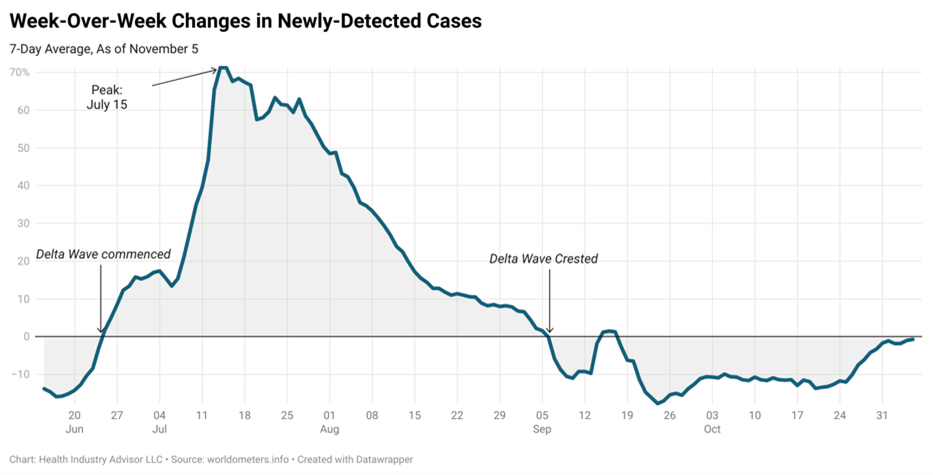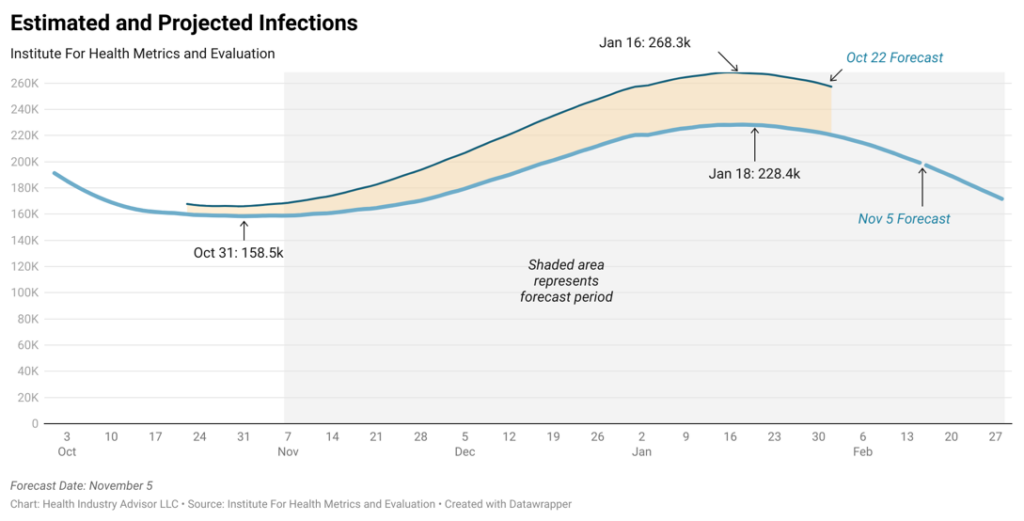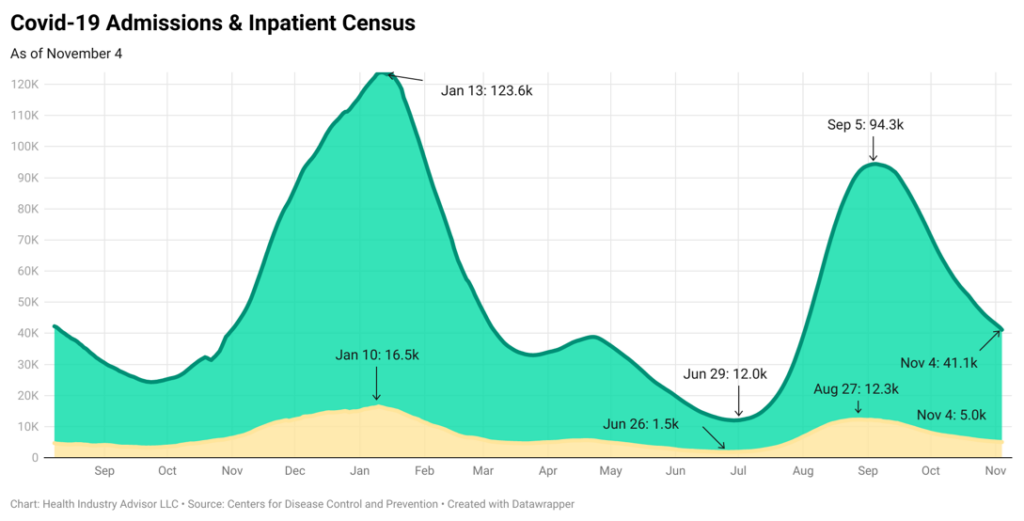November 8, 2021 – The fourth wave of Covid cases peaked in the United States in early September before falling more than 60% over the following two months. However, there were as many new cases last week as the prior week – the first time this Fall that new cases did not decline week-over-week.

Is this a temporary pause or a signal of a new, fifth wave of infections?
With each of the four preceding waves, an instructive pattern emerged: the upsurge’s duration (increasing cases week-over-week) nearly matched the length of the receding wave (declining cases week-over-week). The fourth (“Delta”) wave’s upsurge spanned seventy-two days. It has now been 67 days since this wave crested.
Colder temperatures in much of the country, bringing scores of us indoors, invite the opportunity for increased infection spread.
So, what do the experts say?
The most widely recognized Covid modeling is published bi-weekly by the Institute for Health Metrics and Evaluation (IHME). In its latest model, IHME reaffirmed its expectation of rising cases in the U.S. through early 2022. In IHME’s latest projection, published on Friday, infections peak in mid-January. However, this peak is only 20% higher than current levels.
By comparison, the third and fourth waves witnessed eight-fold surges in new infections.

IHME’s latest model also predicts a more modest increase than its prior model. This version lowered its peak infection estimate by 20% from the model IHME published on October 22.
While infections could increase for the next two months, this modeling suggests that the increase may not constitute a fifth “wave.”
Given this perspective, what could we anticipate for demands on our healthcare system?
Covid admissions and patient days have fallen since early September, with both measures now at half the levels posted two months ago. Even with last week’s pause in declining cases, Covid admissions fell 7% week-over-week and Covid patient days, 9%. Currently, Covid patients occupy fewer than one of every seven beds in the U.S., down from three of every ten in September and four in ten in January. Currently, the worst situation is in Alaska, where Covid patients occupy just fewer than three in ten beds.

In IHME’s modeling, hospital strain could intensify in the next several months. By mid-February, IHME now predicts that both admissions and patient days could double from current levels. If these expectations pan out, admissions and patient days will mirror levels witnessed in early September.
Contributing writer:
Mark A. Van Sumeren, strategic advisor, Medical Devices & Integrated Delivery Networks
Health Industry Advisor LLC, provides a regular report on COVID-19 numbers for the health care industry.
For more information, or to sign up for the report, contact Mark at Mark.VanSumeren@HealthIndustryAdvisor.com; or visit www.HealthIndustryAdvisor.com.
